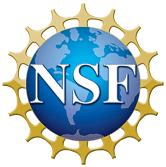|
NETWORKS
Mission and Goals
The Cyber-ShARE Center of Excellence's mission is to advance and integrate cyber-enhanced, collaborative, and interdisciplinary education and research through technologies that support the acquisition, exchange, analysis, and integration of data, information, and knowledge.
Funders and Collaborators
Cyber-ShARE recently received renewal funding of $5,000,000 grant from the National Science Foundation Center of Research Excellence in Science and Technology. The Center also receives funding from the following NSF programs: Innovation and xx and the xx. It also has funding from NASA, USDA, and USAID.
KEYWORDS
- Constraint uncertainty management
- Data integration
- Data management
- Data quality assurance
- Environmental monitoring
- Knowledge management
- Numerical optimization
- Ontologies
- Remote sensing
- Semantic web
- Sensor networks
- Software engineering
EXPERTISE
As national leaders in the study of collaborative science and engineering, Cyber-ShARE has developed and applied models of team-based, cooperative learning, interdisciplinary teamwork, and knowledge integration. CI research has focused on enabling sharing and reuse of scientific results by enhancing results with provenance and other critical information. The Center’s research in analysis of climate change impacts on the environment and the modeling of Earth’s structure has advanced through the Center’s interdisciplinary approaches supported by CI.
CAPABILITIES
KEYWORDS
- Constraint uncertainty management
- Data integration
- Data management
- Data quality assurance
- Environmental monitoring
- Knowledge management
- Numerical optimization
- Ontologies
- Remote sensing
- Semantic web
- Sensor networks
- Software engineering
MEMBERS
Associate Center Director
KEYWORDS
- Constraint uncertainty management
- Data integration
- Data management
- Data quality assurance
- Environmental monitoring
- Knowledge management
- Numerical optimization
- Ontologies
- Remote sensing
- Semantic web
- Sensor networks
- Software engineering
Gallery
|
|||
|
|||
|
|||
|
|||
|







